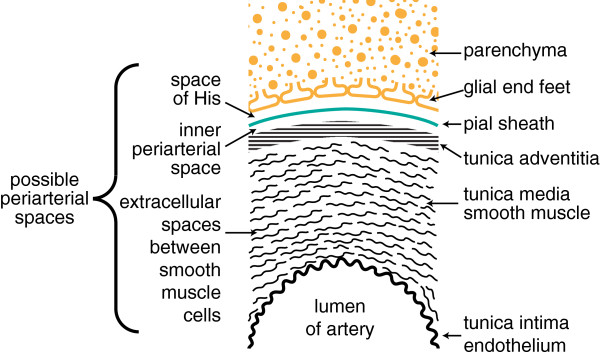Figure 6.

Diagram indicating positions within the cortical parenchyma of periarterial spaces that may allow fluid movement. The spaces shown correspond to those around the arteries in Figure 1d. The diagram has been formatted so that it may be compared with earlier published versions [1]. The diagram (not to scale) shows: the tunica intima, the endothelial lining of the lumen and a covering of elastic tissue; the tunica media, a smooth muscle layer; and the tunica adventitia, mainly connective tissue. Within these layers there are two possible free spaces. The inner, called the periarterial space by Zhang et al.[23] and labelled the inner periarterial space in the diagram, is continuous with the periarterial space of the subarachnoid portion of the same artery. The outer that in contact with the brain parenchyma, is likely to be the space described by His [1]. In the view of Weller and associates (personal communication) both the inner periarterial space and the space of His are virtual spaces with no thickness and fluid movement occurs preferentially in the extracellular spaces of the smooth muscle layer. Other interpretations of the spaces are considered in section 4.3.4.
